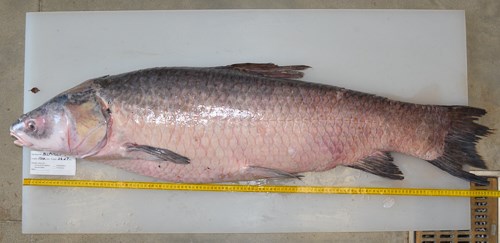
U.S. Geological Survey IntroductionBlack carp primarily eat mussels and snails and sometimes feed along the bottom of rivers and lakes. Its diet increases its risk to native species when it escapes captivity. Mussels are among the most endangered species in the Mississippi River due to degraded water quality and loss of habitat; the additional pressure of a mussel predator could have severe consequences for native freshwater mussels and snails. Black carp were accidentally brought to the United States in 1973 in shipments of grass carp for scientific research and fish farming (aquaculture). Young black carp and grass carp are very difficult to tell apart. They were subsequently imported in the 1980s as a food fish and in the 1990s as biological control for snail-borne parasites in fish farm (aquaculture) operations. Black carp are not found in the Mississippi National River and Recreation Area, but are found in the Mississippi River in Missouri and northward into central Illinois. See the interactive map showing the spread of black carp produced by the U.S. Geological Survey. Fascinating Facts
IdentificationKey ID Features: The black carp closely resembles the grass carp in overall body shape, size and placement of fins. Both black carp and grass carp have very large scales. In contrast to grass carp, the black carp is slightly darker in coloration (not black) and its pharyngeal teeth (throat teeth) are large and similar in appearance to human molars, an adaptation for crushing the shells of mollusks. Black carp also have a somewhat pointed snout. It can reach 59 inches in length and 154 pounds. Present in Park: Not found. Habitat: Large warm rivers and connected lakes. MN Status: Black carp are federally listed as injurious species, which means bringing these fish into the United States or transporting them across state lines is illegal. For Further InformationUSGS Black Carp Fact Sheet | |
Last updated: November 14, 2018
